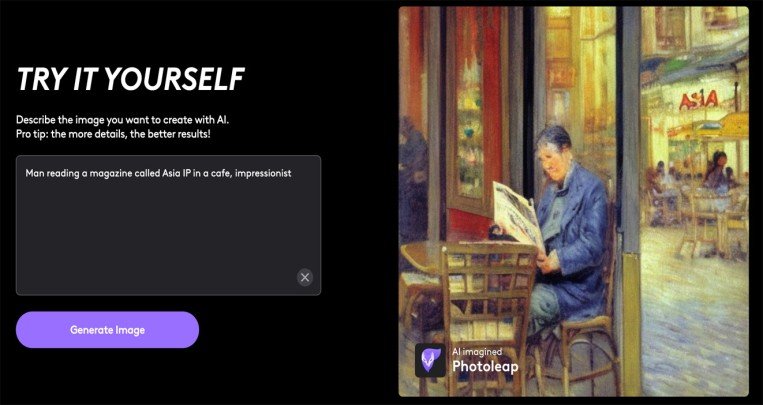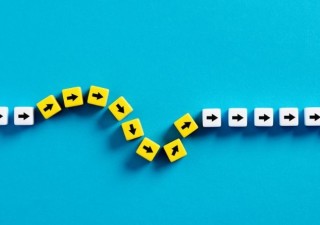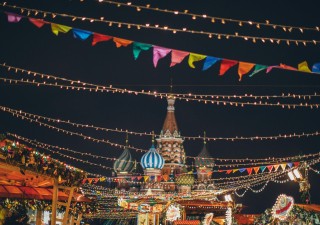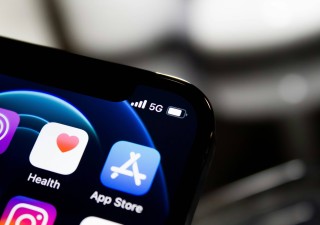Copyright for works created by a neural network
28 February 2023

One of the popular technologies of recent years is neural networks – or rather their software implementation, which is built on the principle of functioning of biological neural networks of a living organism, namely its brain.
With the development of this technology, it becomes more obvious that they can solve complex problems, including creativity tasks, for which only a living person could previously be responsible. Today the question “You are just a machine. An imitation of life. Can a robot write a symphony? Can a robot turn a canvas into a beautiful masterpiece?” from the 2004 film I, Robot, based on the cycles of works by Isaac Asimov, can receive an affirmative answer.
In 1824, Ludwig van Beethoven began work on his 10th symphony, but he died three years later, leaving the work unfinished. From the 10th symphony, only sketches remained, and the other people’s attempts to finish the symphony were unsuccessful. Unexpectedly, the neural network coped with this task, completing the work at the end of 2021.
In addition to writing symphonies, existing neural networks are able to create other objects. For example, the well-known neural network Midjourney creates images from users’ text queries. As stated in Article 1259 of the Civil Code of the Russian Federation, objects of copyright include, among other things, works of fine art. Similar rules are contained in the IP legislation of other countries, which raises the question: how to qualify symphonies, images and other objects created by neural networks? Do they have an author, and if so, who recognizes him? Is legal protection granted to such objects?
As an example, we will take images created by the neural network Midjourney.
Russian legislation on IP, including copyright objects, is expressed primarily in Part 4 of the Civil Code of the Russian Federation. The legislation does not contain special regulation in the field of legal qualification of objects created by neural networks, so it is worth being guided by its general norms.
Legal protection of IP objects, including objects of copyright, is territorial in nature; that is, they arise in connection with the legislation of a particular state. They are valid only if there is a special international agreement. Article 1256 of the Civil Code of the Russian Federation establishes the rules for the legal protection of copyright objects – depending on the territory of which state they were published, depending on the citizenship of the author, and also depending on the rules of international treaties concluded by the Russian Federation.
In addition, the Civil Code of the Russian Federation establishes criteria for the copyrightability of works, i.e., criteria whether the object has legal protection as a work. One of these criteria is the creative nature of the author’s work.
In particular, as stated in paragraph 1 of Article 1228 of the Civil Code of the Russian Federation, the citizen whose creative work created such a result is recognized as the author of the result of intellectual activity. A similar rule is established in Article 1257 of the Civil Code: the citizen whose creative work it was done is recognized as the author of a work of literature, science or art. Thus, the main criterion for recognizing the result of intellectual activity as an object of copyright is the creative nature of the work of its creator. Only an individual can be the author of a work. Another criterion of eligibility is the expression of a work in an objective form.
So, who is recognized as the author of the image generated by the neural network Midjourney at the request of a person, and is there any copyright for such an image?
When determining the creative nature of the author’s work, there are subjective and objective approaches. The subjective approach lies in the fact that the creative contribution of the author to the creation of a work reflects the very personality of its creator, his exclusive style. The objective approach focuses attention not on the expression of the creator's personality in the work, but on its novelty.
The current Russian civil legislation is based on a subjective approach. This is confirmed by the position of the highest court in Russia, expressed in Paragraph 80 of the Decree of the Plenum of the Supreme Court of the Russian Federation dated April 23, 2019, No. 10, “On the application of part four of the Civil Code of the Russian Federation”: It should be borne in mind that, within the meaning of Articles 1228, 1257 and 1259 of the Civil Code of the Russian Federation, in their interrelation, such is only the result that is created by creative labor. At the same time, it should be borne in mind that, until proven otherwise, the results of intellectual activity are assumed to be created by creative labor.
It is also necessary to take into account that the absence of novelty, uniqueness and (or) originality of the result of intellectual activity in itself cannot indicate that such a result was not created by creative work and, therefore, is not an object of copyright.
Thus, in order to determine the author in the mentioned situation, it is necessary to single out the actors who theoretically could be the authors: this is the neural network itself, the creator of the neural network and the user of the neural network. And now we will take into account the current Russian legislation.
-
Creator of the neural network. His creative contribution may lie in the creation of algorithms/codes on the basis of which the neural network itself functions and draws pictures at the request of users. The downside of this approach is that the creator of the neural network did not apply any creative work directly to the creation of a specific image, which is why I believe that he cannot be the author in this case; that is, his contribution to the creation of the neural network cannot be recognized as a creative contribution to the creation a specific image generated by such a neural network.
-
Neural network user. The user enters a set of words, and on the one hand, this can be called a creative contribution; on the other hand, it’s like recognizing as a co-author a person who orders a painting from an artist, giving him a verbal description of such a painting in the order. The user does not draw the image itself – the neural network does it for him, so there is no creative contribution either, which means he cannot be the author. This argument is also supported by the fact that the neural network user’s expectation of the generated image may not coincide with the result.
-
Neural network itself, according to Russian law, cannot be recognized as the author. It can only be a person, an individual.

Thus, none of the previously mentioned actors, in my opinion, can be the author of the image created by the neural network. In addition to the previously mentioned provisions, there is also an approach in the doctrine, according to which such a work cannot have an author, and it goes into the public domain from the moment of its creation. I believe this approach is also wrong.
In accordance with Paragraph 2 of Article 1282 of the Civil Code of the Russian Federation, a Work that has passed into the public domain can be freely used by any person without anyone's consent or permission and without payment of royalties. At the same time, authorship, the name of the author and the inviolability of the work are protected.
Based on the foregoing, even in relation to works that go into the public domain, personal non-property rights are protected, which in our case are absent due to the absence of the author. Thus, I believe that due to the lack of creativity criteria, such images have no author, and they cannot be considered as objects of copyright.
The legal regime for the protection of such images is similar to photographs that are produced automatically (for example, fixing the excess of the speed limit under Article 2.6.1. of the Code of Administrative Offenses of the Russian Federation), the fate of which was determined by the Supreme Court of the Russian Federation (also in paragraph 80 of the Decree of the Plenum of the Supreme Court of the Russian Federation of April 23, 2019 No. 10 “On the application of part four of the Civil Code of the Russian Federation”): “The creative nature of the creation of a work does not depend on whether the work was created by the author himself or using technical means. At the same time, the results created with the help of technical means in the absence of the creative nature of human activity (for example, photography and video filming of a video surveillance camera operating in automatic mode, used to fix administrative offenses), are not objects of copyright.
I believe the above explanation by analogy applies to objects created by neural networks. Nevertheless, world practice contains curious cases of law enforcement in similar situations.
In general, law enforcement agencies in countries such as the U.S., UK and Germany also assume that there are no copyrights on such objects. In particular, such decisions were made by the courts in the United States specifically in relation to images created in the neural network Midjourney.
There are also interesting precedents. For example, in the United States, Kris Kashtanova registered her copyright for comics from images created in Midjourney with the U.S. Copyright Office. However, in this case, I believe, there was a creative character, because the comics has a plot, a selection of sequences of images.
Based on the foregoing, mostly interesting cases are not related to legislation, but to law enforcement practice. For example, a court in China found it illegal to use a note about a business written by a neural network Dreamwriter, while pointing out that “the expressions and intonations of the article are ‘sufficiently original’ and meet the requirements of the law in order to be considered as a written work and protected by copyright”.
In 2021, the court in Australia actually recognized that artificial intelligence can have rights to its invention, referring to the patent law of Australia, which does not contain a direct indication that artificial intelligence cannot be an inventor.
Basically, despite the presence of interesting cases, the current legal order is guided by the existing general rules of IP law. With the advent of such technologies, the regulating norms should appear in the legislation in a timely manner – the use of neural networks is actively developing and popularizing.
I believe that the Civil Code should state whether objects created by neural networks are IP objects at all, and if so, then the procedure for using such objects should be prescribed.
Here, a variety of options are possible – both fixing the fact that such objects are not IP objects, and vice versa – establishing a special regime for their protection, without reference to personal non-property rights, with payment, for example, remuneration to the owner of the rights to the neural network, or fixing rights for the user while retaining the right to use such an image by the owner of the rights to the neural network.








